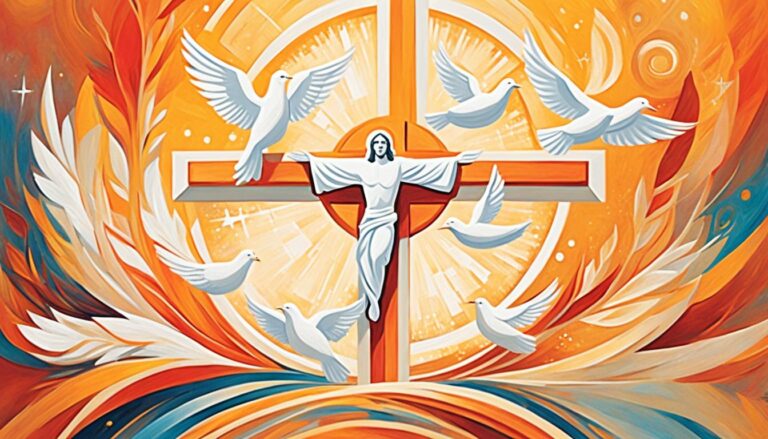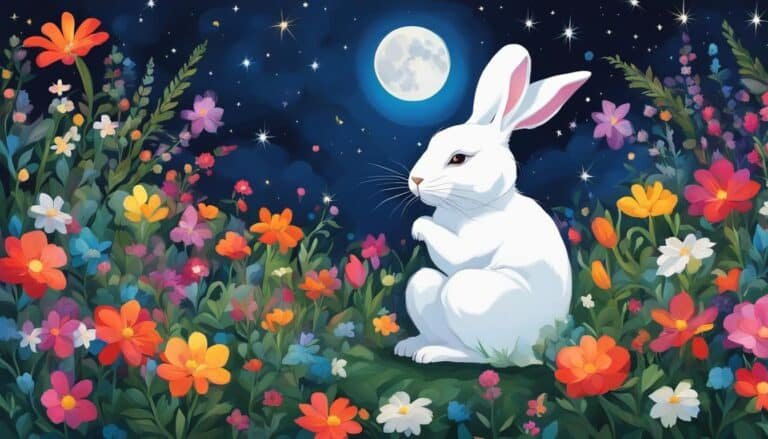What Is the Dead Dream in The Great Gatsby?
In The Great Gatsby, the “dead dream” refers to Jay Gatsby’s unattainable dream of being with Daisy Buchanan. Despite knowing that his dream is unrealistic and cannot be revived, Gatsby continues to fight for it. This symbolizes the illusory nature of the American Dream and how people still cling to it, despite its impossibility.
Key Takeaways:
- Gatsby’s “dead dream” in The Great Gatsby refers to his unattainable desire to be with Daisy Buchanan.
- This symbolizes the illusory nature of the American Dream.
- Despite knowing the impossibility of his dream, Gatsby continues to pursue it.
- The dead dream reflects the characters’ disillusionment with the American Dream.
- This theme of unattainable dreams is portrayed through symbolism in the novel.
The Significance of Gatsby’s Unattainable Dream
In F. Scott Fitzgerald’s iconic novel, The Great Gatsby, Jay Gatsby’s unattainable dream holds great significance as it intertwines with the overarching theme of the American Dream in the 1920s. Gatsby, a self-made millionaire, becomes consumed by his desire to win back the love of his life, Daisy Buchanan. He believes that with enough wealth and social status, he can make his dream a reality and ultimately achieve happiness.
Gatsby’s unattainable dream symbolizes the allure and pursuit of the American Dream during the Jazz Age. It reflects the prevailing belief that anyone could rise above their current circumstance and attain prosperity and happiness through hard work and determination. Gatsby’s relentless pursuit of wealth and status mirrors the cultural values of the time, where materialistic success was seen as a measure of one’s worth and happiness.
However, Gatsby’s tragic downfall serves as a cautionary tale about the inherent dangers of the American Dream. His obsession with material wealth and social standing blinds him to the true meaning of happiness and fulfillment. Gatsby’s relentless pursuit of Daisy becomes a symbol of his misguided aspirations, leading to his ultimate demise.
The novel exposes the dark underbelly of the American Dream, highlighting the superficiality, emptiness, and moral corruption that can accompany the pursuit of material success. Gatsby’s tragic fate serves as a reminder that true happiness and fulfillment cannot be achieved solely through wealth and social status.
The Tragic Downfall of Gatsby
Gatsby’s relentless pursuit of his unattainable dream ultimately leads to his tragic downfall. His single-minded obsession with Daisy blinds him to the reality of their relationship and causes him to engage in unethical activities to amass his wealth. This pursuit of his American Dream ultimately leads to his demise, as his reckless actions catch up with him.
Throughout the novel, Gatsby’s unattainable dream and its significance act as a stark reminder of the hollow nature of the American Dream. It exposes the myth of unlimited opportunity and highlights the dark consequences of desperately chasing an unfulfillable dream.

Symbolism in The Great Gatsby
The Great Gatsby is a literary masterpiece that explores the themes of wealth, love, and the pursuit of the American Dream. One of the remarkable aspects of F. Scott Fitzgerald’s novel is the skillful use of symbolism throughout the story. Symbols are used to represent deeper meanings and add layers of complexity to the narrative. In this section, we will delve into the symbolism in The Great Gatsby, focusing on two recurring motifs: the green light and the valley of ashes.
The Green Light
The green light, situated at the end of Daisy Buchanan’s dock, is perhaps one of the most iconic and enduring symbols in literature. It represents Gatsby’s hopes and dreams, specifically his longing to be with Daisy. The green light shines across the water, luring Gatsby towards the unattainable dream of rekindling their love. It acts as a guiding beacon, revealing Gatsby’s relentless pursuit of his heart’s desires, despite the obstacles and societal boundaries that stand in his way.
Furthermore, the green light symbolizes both the beauty and the elusiveness of the American Dream. Gatsby associates the light with wealth, success, and the promise of a better life. However, no matter how close he gets to it, the light remains distant and unattainable, highlighting the inherent difficulty of achieving the ideals that the American Dream represents.
The Valley of Ashes
In stark contrast to the opulence of East and West Egg, the valley of ashes stands as a desolate wasteland. It represents the moral and social decay beneath the surface of the Roaring Twenties. The valley is a dumping ground for industrial waste and serves as a haunting reminder of the consequences of the unbridled pursuit of wealth and excess.
The valley of ashes symbolizes the stark divide between the rich and the poor, highlighting the stark inequality and social injustice of the time. It also serves as a reminder that beneath the shimmering facade of the American Dream lies a darker reality, where wealth and success come at a great cost.
The symbolism in The Great Gatsby adds depth and nuance to the narrative, allowing readers to explore themes and ideas beyond the surface-level story. The green light and the valley of ashes serve as powerful symbols, conveying the complexities and contradictions of the characters’ lives, as well as the larger themes of the novel.
The Disillusionment with the American Dream
The Great Gatsby, one of the most celebrated works of American literature, delves deep into the themes of disillusionment with the American Dream. Set in the 1920s, the novel exposes the dark underbelly of the Roaring Twenties, where the pursuit of wealth and social status masks a profound emptiness and corruption.
The characters in The Great Gatsby exemplify the disillusionment that plagues the American Dream. The enigmatic Jay Gatsby, the embodiment of the self-made man, dedicates his life to acquiring wealth and throwing lavish parties, all in an attempt to win over his long-lost love, Daisy Buchanan. However, as the story unfolds, Gatsby’s grandiose dreams crumble, revealing the hollowness and futility of his pursuit.
Through Gatsby’s tragic downfall, F. Scott Fitzgerald critiques the notion that materialistic success equates to genuine happiness and fulfillment. The glitter and glamour of the Jazz Age serve as mere façades, masking the profound disillusionment experienced by individuals who have bought into the American Dream.
In The Great Gatsby, Fitzgerald skillfully depicts the disillusionment with the American Dream as a universal experience. Gatsby’s relentless pursuit of wealth and status mirrors the aspirations of countless Americans during that era and continues to resonate with readers today. The novel serves as a cautionary tale, reminding us of the dangers of prioritizing material possessions over authentic human connections and personal fulfillment.

The Impact of Gatsby’s Dead Dream
The disillusionment with the American Dream depicted in The Great Gatsby goes beyond a mere critique of societal values. It highlights the profound impact that unattainable dreams and the pursuit of illusions can have on individuals and society as a whole. The characters in the novel, confronted with the emptiness of their own aspirations, grapple with the consequences of their actions in a society where dreams are built on sand.
As readers delve into the story, they too experience a sense of disillusionment, prompting them to question the very foundations of the American Dream and its promises. The novel serves as a powerful reminder that the pursuit of wealth and social status can lead to moral decay, shattered dreams, and ultimately, the disintegration of hope.
The themes explored in The Great Gatsby continue to resonate today, as societies around the world face the consequences of the relentless pursuit of material success. Fitzgerald’s masterpiece serves as a stark warning against the dangers of losing sight of what truly matters in the pursuit of the elusive American Dream.
The Impact of Gatsby’s Dead Dream
Gatsby’s dead dream leaves a lasting impact not only on his own life but also on the reader’s perception of the American Dream. Throughout the novel, we witness Gatsby’s relentless pursuit of his unattainable dream of being with Daisy Buchanan, despite knowing deep down that it can never be realized.
This unwavering belief in the possibility of achieving the unachievable showcases the danger of holding onto illusions and the consequences of pursuing an empty dream. Gatsby’s tragic conclusion serves as a cautionary tale, highlighting the pitfalls of the relentless pursuit of success and material wealth.
Through Gatsby’s story, F. Scott Fitzgerald reveals the emptiness and disillusionment that can come from fixating on a dream that is ultimately dead. Gatsby’s downfall exposes the dark underbelly of the American Dream, where the allure of wealth and social status can lead to a tragic end.
Gatsby’s demise serves as a reminder that dreams must be grounded in reality and that true happiness cannot be found in material possessions or an unattainable fantasy. The impact of Gatsby’s dead dream forces us to question the cost of pursuing our own dreams and to reconsider the meaning of success in a society driven by illusion and extravagance.








